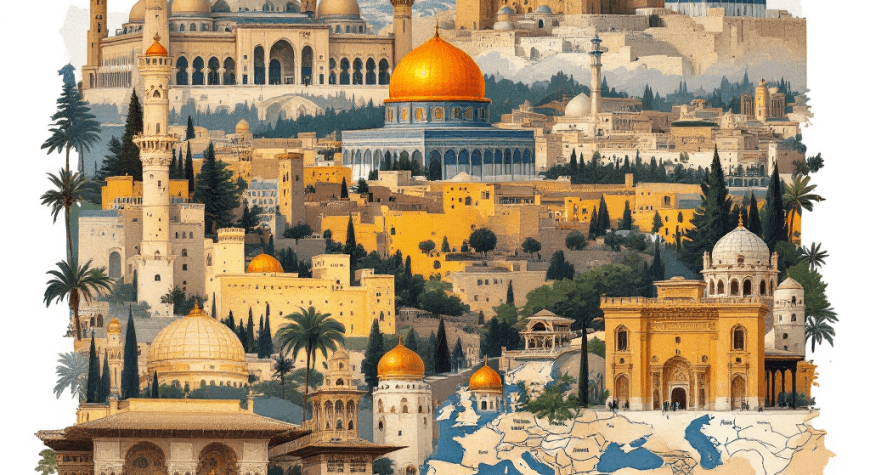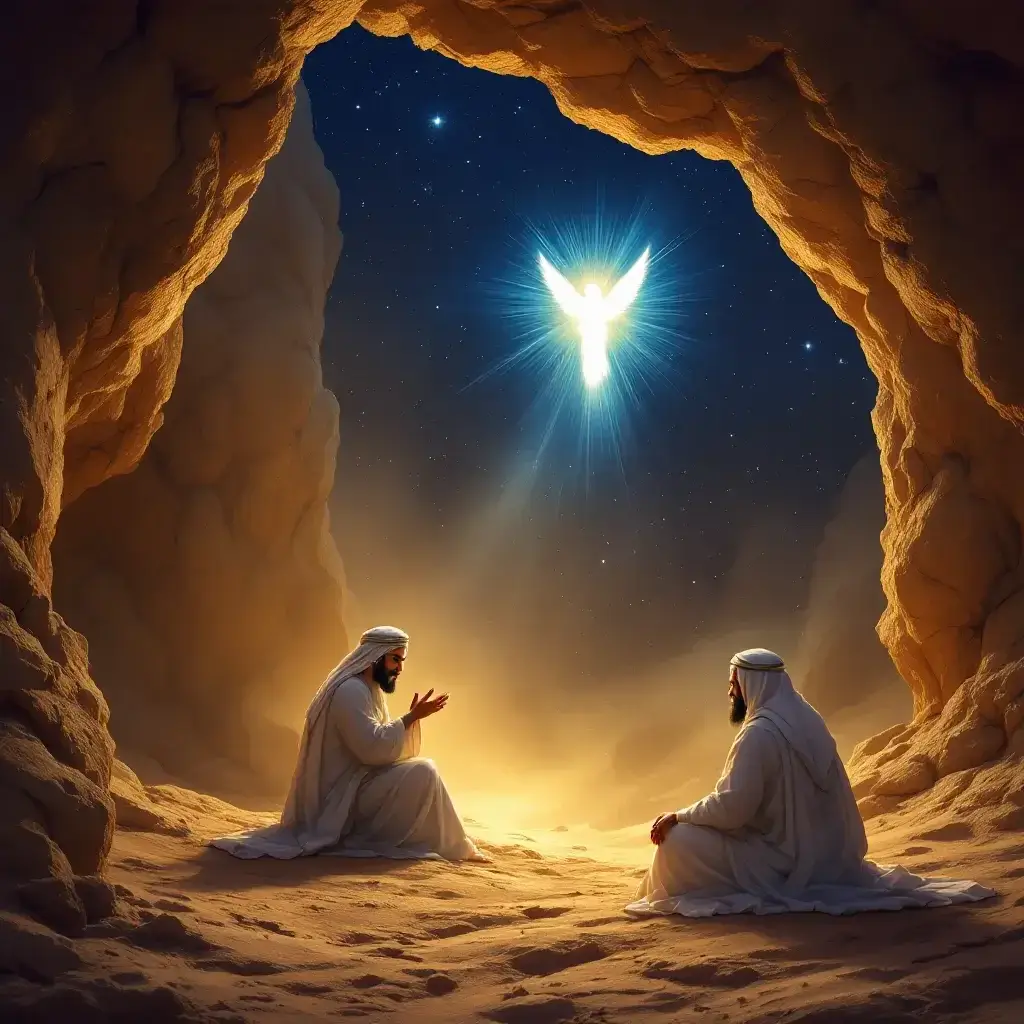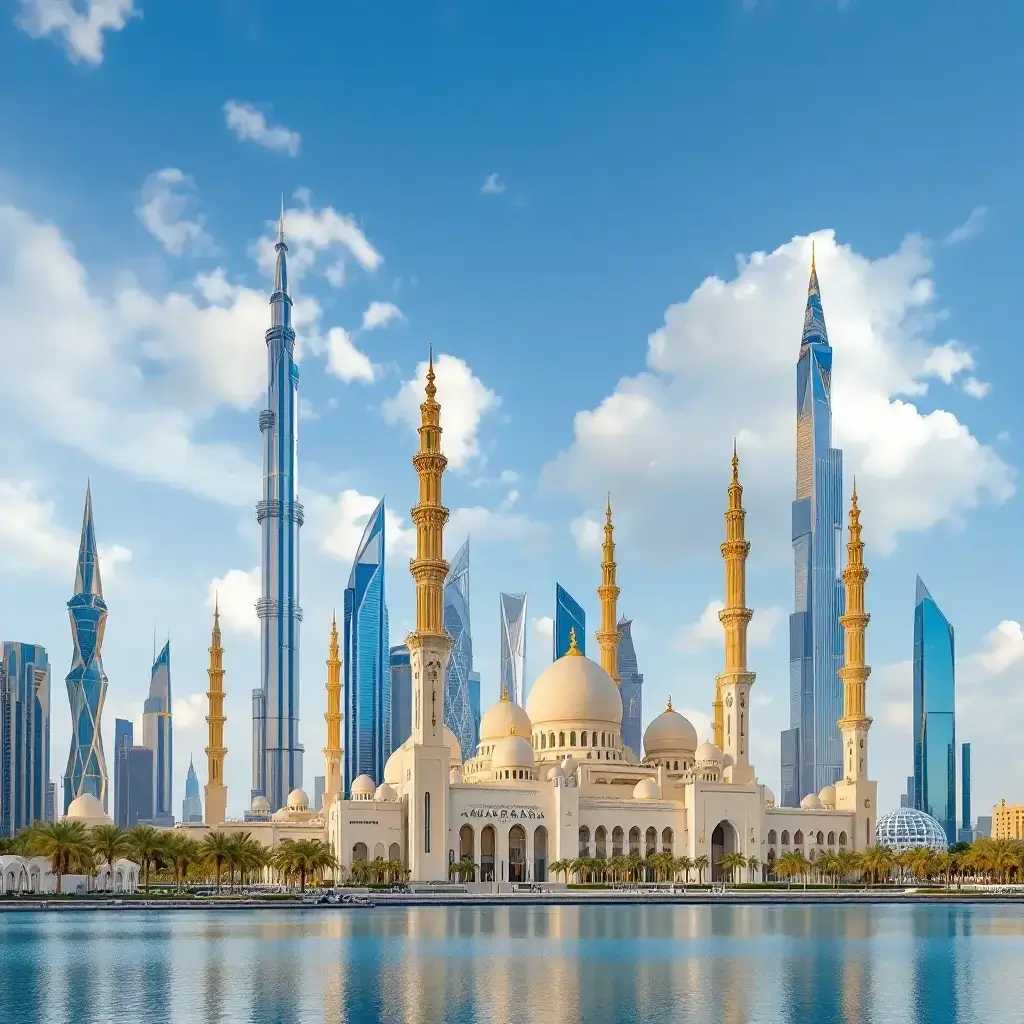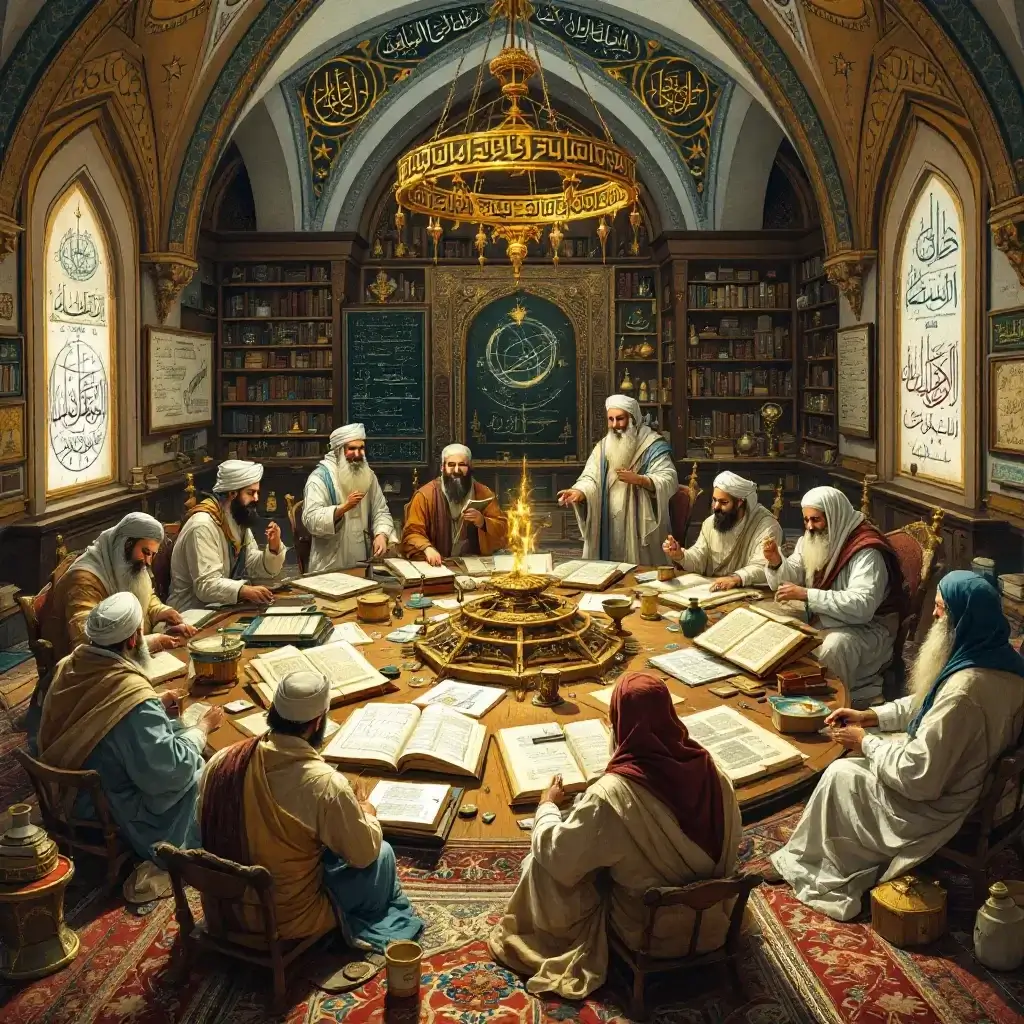Islamic Golden Age and Civilization

Islamic History and Civilization
The history and civilization of Islam are rich and multifaceted, stretching over a millennium and influencing various aspects of global development, from science and philosophy to art and politics. Beginning in the 7th century CE, Islamic civilization emerged in the Arabian Peninsula, centered around the life and teachings of the Prophet Muhammad. Over time, Islam spread far beyond its place of origin, reaching regions as diverse as Spain, Central Asia, India, and Southeast Asia. This expansion shaped the course of history and established a profound legacy that continues to affect modern society.
The Birth of Islam
The genesis of Islam is linked to the life and teachings of Muhammad (c. 570-632 CE), who is considered the final prophet by Muslims. Born in Mecca in the Arabian Peninsula, Muhammad received his first revelation at the age of 40, which he believed was delivered to him by the angel Jibril (Gabriel). These revelations were recorded and later compiled into the Qur’an, the holy book of Islam, which is considered the ultimate source of guidance for Muslims.

In the early years of his prophethood, Muhammad faced resistance from the polytheistic tribes of Mecca, which led to his migration (Hijra) to Medina in 622 CE. This migration marks the beginning of the Islamic calendar. In Medina, Muhammad was not only a religious leader but also a political and military one. Over the next decade, Islam spread rapidly across the Arabian Peninsula, culminating in the conquest of Mecca in 630 CE.
By the time of Muhammad’s death in 632 CE, Islam had firmly established itself in the Arabian Peninsula, laying the foundations for the subsequent expansion of Islamic civilization.
The Expansion of Islam
After the death of the Prophet Muhammad, the leadership of the Muslim community passed to a series of caliphs, beginning with Abu Bakr, the first caliph. Under the guidance of the early caliphs, the Islamic empire expanded rapidly. The Rashidun Caliphate (632–661 CE) brought the majority of the Arabian Peninsula under Muslim rule and soon extended its reach into the Byzantine and Sassanian Empires.

The conquest of the Byzantine Levant and the Sassanian Empire marked the beginning of a profound cultural exchange. The Arabs not only brought Islam to these regions but also encountered the sophisticated cultures of the Greeks, Romans, and Persians. The translation of Greek philosophical and scientific texts into Arabic during the Abbasid period (750–1258 CE) played a pivotal role in preserving and transmitting knowledge to later generations, including the European Renaissance.
The Golden Age of Islam
The Abbasid Caliphate, which succeeded the Umayyad Caliphate (661–750 CE), is often regarded as the golden age of Islamic civilization. Under the Abbasids, the Islamic world saw a flourishing of science, philosophy, literature, and art. The capital city of Baghdad became the intellectual and cultural hub of the Muslim world, attracting scholars, philosophers, and scientists from across the empire.

One of the most significant contributions of the Islamic Golden Age was the advancement of knowledge in the fields of medicine, astronomy, mathematics, and chemistry. Notable scholars such as Al-Razi (Rhazes) in medicine, Al-Khwarizmi in mathematics, and Ibn al-Haytham in optics laid the groundwork for modern scientific thought. The works of these scholars were translated into Latin during the Middle Ages, influencing European thinkers such as Copernicus, Galileo, and Kepler.
In addition to scientific achievements, Islamic civilization saw the development of architectural and artistic traditions. The construction of iconic structures such as the Dome of the Rock in Jerusalem, the Alhambra in Spain, and the Great Mosque of Samarra exemplify the intricate artistry and advanced engineering of the time. Calligraphy, which became a prominent form of Islamic art due to the prohibition of depicting human figures, also flourished, with beautiful Qur’anic verses written in elegant scripts.
The Spread of Islam
The spread of Islam was not limited to the Arabian Peninsula but extended across vast regions through military conquest, trade, and missionary activities. The Umayyad Caliphate, which followed the Rashidun Caliphate, expanded the Islamic empire into Spain, North Africa, and Central Asia. The conquest of Spain in 711 CE marked the beginning of centuries of Islamic rule in the Iberian Peninsula, known as Al-Andalus.
In the east, Islam spread into Persia, Central Asia, and India, often through peaceful means such as trade and the efforts of Sufi missionaries. The spread of Islam in South Asia, particularly in the Indian subcontinent, was significantly influenced by Sufi mysticism, which emphasized personal experience and devotion to God. Sufi orders played a key role in bridging cultural and religious divides, fostering a syncretic form of Islam that blended elements of local traditions with Islamic teachings.
In Southeast Asia, Islam spread through trade routes and the efforts of Muslim traders and missionaries. By the 15th century, Islam had become the dominant religion in the Malay Archipelago, which includes modern-day Indonesia and Malaysia.
The Decline of the Caliphate and the Rise of Empires
While the early centuries of Islamic civilization were marked by unity and cultural flourishing, internal divisions and external pressures eventually led to the decline of the caliphates. The Abbasid Caliphate, weakened by political fragmentation and invasions, was eventually overthrown by the Mongol invasion in 1258 CE, marking the end of the classical Islamic Golden Age.
However, the legacy of Islamic civilization continued through the rise of powerful regional empires, such as the Ottoman Empire, the Safavid Empire, and the Mughal Empire. The Ottoman Empire, which lasted from the 14th to the early 20th century, became one of the most enduring and influential Islamic empires, controlling vast territories in Europe, Asia, and Africa. The Safavid Empire in Persia and the Mughal Empire in India also played significant roles in shaping the cultural and political landscapes of their respective regions.
Read More About Islam : History of Quran
The Modern Era
The decline of the Ottoman Empire in the 19th and early 20th centuries, coupled with the rise of European colonialism, marked the beginning of a new chapter in Islamic history. The colonization of much of the Muslim world by European powers had a profound impact on Islamic societies, leading to economic, political, and social upheaval.
In the 20th century, the collapse of the Ottoman Empire after World War I and the establishment of nation-states in the Middle East, such as Turkey, Iraq, and Egypt, led to significant changes in the political landscape of the Muslim world. The discovery of oil in the Arabian Peninsula and the subsequent rise of the Gulf states brought newfound wealth and geopolitical importance to the region.
At the same time, Islamic movements advocating for political Islam, such as the Muslim Brotherhood in Egypt and the Iranian Revolution of 1979, sought to revive Islamic principles in governance and society. These movements have influenced contemporary political developments in many parts of the Muslim world.
Islamic history and civilization are a testament to the richness and diversity of the Muslim world. From its humble beginnings in the deserts of Arabia, Islam spread across continents, shaping the course of history through its contributions to science, philosophy, art, and governance. The intellectual legacy of the Islamic Golden Age continues to inspire scholars and thinkers today, while the political and cultural influence of Islam remains a defining force in the modern world. The history of Islam is not only the history of a religion but also a profound and enduring civilization that has shaped the trajectory of human progress.
FAQ’s
1. What is the history of Islam?
Islamic history began in the 7th century CE in the Arabian Peninsula with the Prophet Muhammad’s teachings. Over time, it expanded across the world, influencing science, art, governance, and culture.
2. What were the main contributions of Islamic civilization?
Islamic civilization contributed significantly to fields like mathematics (algebra), astronomy, medicine, chemistry, art, and architecture during its Golden Age (8th–13th centuries).
3. How did Islam spread so widely?
Islam spread through military conquests, trade, and missionary activities. Sufi mystics played a key role in spreading Islam in South Asia and Southeast Asia.
4. What is the Golden Age of Islam?
The Golden Age of Islam (750–1258 CE) was a period of cultural, scientific, and intellectual growth under the Abbasid Caliphate. Key achievements were made in medicine, mathematics, astronomy, and art.
5. What led to the decline of the Islamic Golden Age?
The decline was caused by internal divisions, political fragmentation, and external invasions, particularly the Mongol invasion of Baghdad in 1258 CE.
6. What are the most famous empires in Islamic history?
The Ottoman Empire, Safavid Empire, and Mughal Empire were among the most powerful and influential Islamic empires, shaping cultural and political landscapes for centuries.
7. What role did trade play in the spread of Islam?
Trade played a crucial role in spreading Islam, particularly in Africa, South Asia, and Southeast Asia. Muslim merchants and traders introduced Islamic culture and religion to these regions.
8. What is the significance of Islamic art and architecture?
Islamic art and architecture, known for intricate geometric designs, calligraphy, and iconic structures like mosques and palaces, reflect the cultural and spiritual values of the Muslim world.
9. How did Islamic knowledge influence the European Renaissance?
Islamic scholars preserved and translated ancient Greek and Roman texts, contributing knowledge in fields like medicine, astronomy, and philosophy. This knowledge was later transmitted to Europe, influencing the Renaissance.
10. What is the modern impact of Islamic civilization?
Islamic civilization continues to influence the world through its cultural, scientific, and religious legacy, as well as its contributions to modern architecture, governance, and global trade.
Lorem Ipsum

